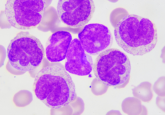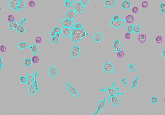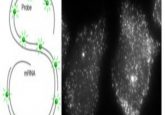Introducing Z to mRNA

Researchers have incorporated a base into mRNA that is not naturally present in the human body, producing mRNA that has decreased cytotoxicity compared to unmodified mRNA.
Katalin Karikó and Drew Weissman were awarded the 2023 Nobel Prize for Physiology or Medicine for their discoveries around nucleoside base modifications that meant the mRNA COVID-19 vaccines could become a reality, an application that showcased the potential of mRNA vaccines. Now, researchers at the University of Illinois (IL, USA) have incorporated a base into mRNA that is not naturally present in the human body [1]. This could open the doors to novel mRNA-based therapeutics, for example in treating cancer.
Modified mRNA has been studied for decades and in 1977, researchers found that the S-2L virus, which infects cyanobacteria, does not have adenine base units in its genome. Instead, a different base is present called 2-amino adenine (shortened to Z) [2]. The researchers of this recent study have succeeded in incorporating Z into mRNA, producing Z-mRNA. They synthesized this using in vitro transcription, replacing ATP with ZTP (2-amino-ATP) in the reaction.
Modified mRNA is more stable and has favorable immunogenic characteristics compared to unmodified mRNA, which contains adenine, uracil, cytosine and guanine (A, U, C and G) bases. Unlike other modified bases, Z is not naturally found in the human body. The researchers found that Z forms three hydrogen bonds with base U, instead of the two hydrogen bonds formed between A and U, in mRNA.
 Two-pronged strategy boosts mRNA COVID-19 vaccines
Two-pronged strategy boosts mRNA COVID-19 vaccines
Researchers have modified COVID-19 vaccines to produce a stronger immune response at a lower dose by modifying both the antigen and the lipid nanoparticle.
“Traditional wisdom is that modified bases should ideally come from the human body so that any mRNA modified by such a base would mimic mRNA in the human body and bypass immune surveillance,” explained first author Meng Zhang. However, when tested in cultured cells, the researchers found the Z-mRNA possessed low immunogenicity, reduced cytotoxicity and improved translational capacity compared to unmodified mRNA. Despite altering the Watson–Crick base pairing, Z-mRNA has favorable properties and could be used to produce alternative mRNA vaccines with fewer side effects.
To assess the modified mRNA in vivo, the team produced a COVID-19 vaccine with Z-mRNA. In mice, the Z-mRNA vaccine induced a substantial and antigen-specific immune response. However, it was not as potent as the modified mRNA vaccines from Moderna and Pfizer, which were used as a comparison in this study. The researchers do believe that with further improvements, the potency of the Z-mRNA vaccine could be improved.
Zhang concluded, “The biggest implication of this work is that people don’t have to be limited by those modifications that are naturally present in our body, it is possible to choose modifications outside of our body, but that can still give the desired biological effects such as reduced immunogenicity and enhanced translational ability.”





